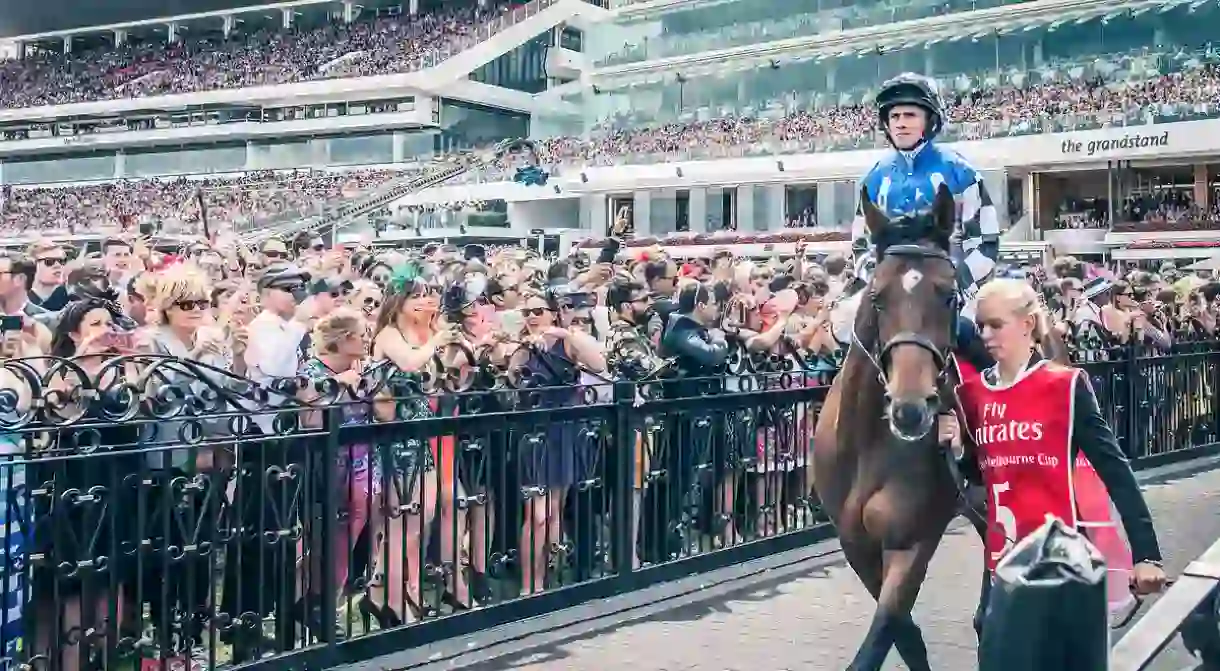Cultural Experiences Exclusive To Melbourne

Melbourne is Australia’s cultural capital and is the setting for some of the country’s most significant events including sporting finals, horse races, festivals and days of remembrance. Many of these cultural experiences are so central to the lives of Melburnians that public holidays are observed to mark the occasions. Each with their own long-standing traditions and a prominent position on Melbourne’s event calendar, these are the cultural experiences you can’t miss in Melbourne.
Royal Melbourne Show
Every September for 168 years, Victorians have flocked to the Royal Melbourne Show for a slice of agricultural amusement and to pick up a showbag or two. Since 1848, the Royal Agricultural Society of Victoria have organised the event which attracts half a million people over almost two weeks every year. Held at the Royal Melbourne Showgrounds in Ascot Vale, the show includes 16 pavilions which house livestock and domestic animal competitions, art and crafts stalls, fresh produce, wood chopping competitions, ports, leisure activities, and much, much more. One of the show’s chief attractions is the 3,000 square meter Showbag Pavilion. Prior to the carnivals commencement, showbag titles are released on the 6:00 news, and no matter you’re budget or interest, there’s a showbag for you. The Royal Melbourne Show also has a rich history of amusement rides to thrill both young and old including dodgem cars, roller coasters and a Ferris wheel.

AFL Grand Final
The last Saturday in September or the first Saturday in October is reserved for Australia’s most significant sporting event: the Australian Football League Grand Final game. Two teams play over four quarters to become the premiership champion, and the winner receives the Premiership Cup, a Premiership Flag, and each player on the winning team is awarded a gold Premiership Medallion. The first Grand Final was played in 1889 between Essendon Football Club and Fitzroy Football Club at the St. Kilda Cricket Ground in the VFL league, and in 1990 the Victorian game evolved into a national game known as AFL, with the first game at the Melbourne Cricket Ground played in 1902. Since 1977, on the Friday before the Grand Final, there’s a parade through the streets of Melbourne, and as of 2015 the day has been observed as a public holiday. The Grand Final game is watched by 110,000 spectators and 3.3 million home viewers, and the game day entertainment includes a pre-match, post-match and halftime concert.

ANZAC Day
ANZAC Day has been commemorated each year on the 25th of April since 1916 to remember Australians and New Zealanders ‘who served and died in all wars, conflicts, and peacekeeping operations.’ The national public holiday begins with the Dawn service, a tradition which began in the 1920s. The Dawn Service includes a prayer, hymns, the Australian and New Zealand national anthem, one minute of silence, the laying of wreaths and the Last Post. The Dawn Service attracts large crowds and is followed by the Gunfire breakfast of coffee with rum. Mid-morning veterans, descendants and current military personnel take part in the ANZAC Day March which is televised in each state. Other ANZAC Day traditions include the gambling game two-up which becomes legal on this day due to its significance. There is also the annual ANZAC Day AFL clash between Essendon and Collingwood. Many Australian’s also make the pilgrimage to Villers-Bretonneux in France and Gallipoli in Turkey, where two of Australia’s most significant battles were fought.

Moomba
After Queen Elizabeth II visited Melbourne in 1954, it was decided that an annual festival should be held. Since the 12th of March 1955, the Moomba Festival has taken place over the Labour Day long weekend in March throughout Alexandra Gardens, and it has more recently extended to Birrarung Marr. Traditional events include the Moomba parade, the crowning of the Moomba monarchs, live music, watersports, nightly fireworks and the birdman rally which began back in 1976. Moomba is Australia’s biggest free community festival and draws crowds of a million people each year with the highest attendance record set in 1996 with 1.7 million people. For years the etymology of the word Moomba has been argued, with some linguists suggesting it translates to ‘up your bum’ in many Aboriginal languages, while others maintain it translates to ‘let’s get together and have fun.’ In 2016 the Moomba monarchs were Michelle Payne, the first female jockey to win the Melbourne Cup, and her strapper brother, Steven Payne.

Melbourne Cup
The Race That Stops a Nation is the ‘richest two-mile handicap’ thoroughbred horse race in the world. Horses three-years-old and over run at 3pm on the first Tuesday in November at the Flemington Race Course, and since 1877 the day has been a public holiday. Archer was the first horse to win in 1861, and the prize was a gold watch. Originally the track was 3,219 kilometers, but with Australia’s adoption of the metric system the distance was shortened to 3,200 meters. In 1865 the first trophy was presented, and these days a trophy and prize money of $6,200,000 is awarded. Approximately 100,000 people, including many international celebrities, attend the race with many sporting formal attire, fascinators and hats in an effort to win Fashions on the Field. It’s estimated that 80% of adults in Australia will place an official bet on the race with many families celebrating with a BBQ and their own sweeps.














